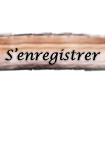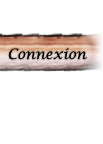Candoia caranita or Pacific Ground Boa is a very particular snake. It has a unique flat head giving him his unique appearance.
Candoia taxonomy is not easy to keep up to date and to agree on. For the same snake, the Latin word can depend merely on the person you are addressing. The taxonomy used here might be partly wrong…
Species.3 Species, et probably 6 subspecies.
Candoia carinata with 2 subspecies (
paulsinii and carinata)
Candoia
bibroni with 2 subspecies (
australis and
bibroni)
Candoia aspera with 2 subspecies (
asper and
schmidti)
Other usual names:Paulsonii: Salomon Island Ground Boa
Australis: Salomon Island Tree Boa
Carinata: New Guinea Tree Boa
Bibroni: Fidji Boa
For both species of
Candoia aspera: Viper Boa
Natural habitat and Lifestyle:Earth-dwelling or partially tree-dwelling. (according to species and subspecies)
Candoias live in various types of landscapes.
For instance,
Candoia carinata carinata and
Candoia bibroni australis are mostly tree-dwelling, whereas the Viper Boa is the one dwelling the most on the ground . All the others are rather groung-dwelling, although they can from time to time climb onto the branches decorating their terrarium.
Size.According to the different species.
From 60cm to 100 cms; the largest are the
Candoia bibroni bibroni. Big females can reach 180 cm.
Reproduction.Ovoviparous. A female can be covered by several males. Still, a femelle should not be reproduced 2 years without interruption. Hatchings are quite difficult to feed as they often rather lizards and frogs… preys must thus be impregnated with Anoles and frogs to incite the young to eat.
They are easy to sex: males have spurs on each side of the cloaca whereas females show none.
They reproduce from June to January.
The number of babies varies from 10-15, but it greatly varies according to the subspecies.
For example, a female
Candoia carinata carinata will have up to 6 babies, whereas a female
Candoia carinata paulsonii, up to 50.
Expectancy varies from 6 to 9 months.
Native to: South Pacific Islands. New Guinea, Salomon Islands, Iran Jaya and Halmahera Islands.
Feeding:They have a taste for lizards and amphibians, but they are usually used to eating rats when captive.
As a consequence, the preys must be impregnated with the smell of some lizard or frog, in order to be appetizing. Hatching are generally hard on eating for the first time and it is quite a long procedure requiring much patience.
Candoia have something quite specific concerning their diet. As a matter of fact, they do not need to eat as often as other boas do; as they have a slow metabolism and are much less active than other boas, they can easily be fed every 2 or every 3 weeks.
Life Span:About 20 years.
Temper: They are not snakes that can be so easily handled…depending of course on the species and subspecies. But generally speaking, they can be docile for a moment, and suddenly become aggressive. They must be considered as ‘nervous’ snakes, although exceptions certainly exist.
Captivity:Candoias are little snakes, and don’t need much space. A 20 gallon terrarium is enough; The substrate must not be too dry, neither too wet. Newspaper can be used, and is often considered as handy although not aesthetic. Mulch is ideal, but be careful when feeding that the boa does not swallow any bits. If you choose a substrate that can be ingested, you should feed your boa outside the terrarium.
A vast water dish is crucial for this kind of snake. It likes bathing and drinks a lot. It generally does its feces in this dish. Branches must be provided to all species of
Candoias, except to the Viper Boa, that is not really a tree-dwelling snake. Salomon Islands tree-dwelling Boa and the New-Guinea tree-dwelling Boa require several solid branches to climb on. A hiding place is compulsory. If possible, one must be place on the basking spot, and another one on the cooling spot. Apart from some object helping the snake’s shedding, nothing more is needed. A heating lamp is not necessary for this kind of snake, nor is a UV lamp although it cannot be a bad thing…
A
Candoia does not need a high temperature to feel comfortable. In a breeding room where the temperature is situated between 27°C and 30°C, a heating pad is even not necessary. If you keep your
Candoia in a cooler room, you should adapt a little heating pad under the terrarium to reach a temperature of 28°C at the basking spot.
Temperatures:Lower than most captive-kept boas.
Hot spot: 27°C-30°C
Cool spot: 25°C
Night temperatures: 24°C-28°C
Hygrometry:Between 50% and 80%. This can be obtained thanks to a large water dish. Spraying the terrarium several times a week is recommended to make the humidity level rise. The water dish must be changed on a regular basis to avoid any germs appearance and growth, as the snake bathe in the water as well as drinks it.
Some pics:










